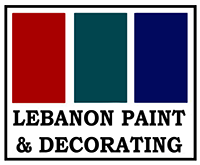HOW TO PREVENT PAINT LAP
Lap marks in paint appear as a deeper color or an increased gloss where wet and dry layers overlap during paint application. Keeping a “wet edge” is the key to avoiding lapping paint. While painting, you need to move quickly enough so, the paint being applied can seamlessly flow into the just-applied paint.


What Causes Lap Marks?
Lap marks while painting can occur for a variety of reasons, including:
- Painting in direct sunlight or too much wind causing the product to dry too quickly
- Applying a different thickness than what is recommended on the Technical Data Sheet (See TDS)
- Using poor-quality paints
- Coating a porous surface that makes the paint dry too quickly

How to Prevent Paint Lap Marks
Use the following methods to prevent lap marks:
- Brush and roll from “wet to dry” rather than vice versa, to produce a smooth, uniform appearance
- Apply a primer or sealer to seal the surface and create uniform porosity when the substrate is very porous (follow label and Technical Data Sheet priming recommendations for bare substrates)
- Use enough paint, a consistent application technique and the right pace to ensure even application
- Paint in manageable area sizes to maintain a “wet edge”

How to Keep a “Wet Edge”
Keeping a wet edge by applying paint a short distance away from the portion you just painted and rolling or brushing back into that wet area prevents lap marks.
- Plan breaks at natural interruptions such as a window, door, or corner
- Cut into planned breaks with a brush while wall paint is still wet
- Use quality paints and apply them per the directions to help avoid lapping
